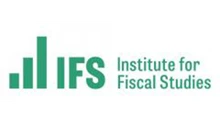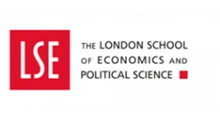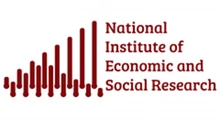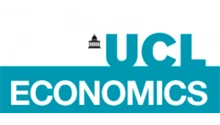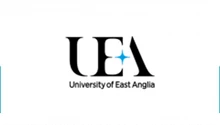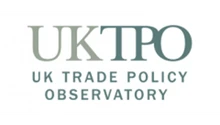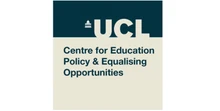The Belt and Road Initiative lies at the heart of China’s outward economic engagement, providing opportunities for Chinese firms abroad and boosting infrastructure and development in recipient countries. Future challenges include governance, debt sustainability, and social and environmental effects.
In under 50 years, China has made the transition from a largely isolated, inward-focused nation to a pivotal player in the global economy – a transformation culminating in the Belt and Road Initiative (BRI).
This article explores how the BRI extends the historical trajectory of China’s outward investment, elucidates its role within the country’s broader economic strategy and analyses its effects on recipient countries.
China's outward investment history: from self-reliance to ‘going global’
During the Maoist period (1949-76), a strong emphasis on the policy of self-reliance (zili gengsheng) dictated China's economic engagement with the rest of the world. This meant that foreign direct investment (FDI), whether flowing into or out of China, was limited, as was international trade, which was carefully controlled by the state.
The death of Mao Zedong and the subsequent rise of Deng Xiaoping ushered in a new era of economic reform and opening (gaige kaifang) from 1978. This was characterised by an ‘open door’ policy that welcomed foreign investment, which was crucial to create jobs and to acquire new skills and technology, thus modernising the Chinese economy.
While the primary focus during this period was on attracting FDI, the Chinese government also began cautiously to explore the potential benefits of outward investment. Initial activities were primarily undertaken by state-owned companies in sectors considered to be strategically important, such as natural resources. As economic reforms progressed, the government gradually loosened restrictions, allowing more enterprises – including non-state-owned firms – to invest abroad.
The ‘go out’ or ‘going global’ (zou chu qu) strategy was officially announced in March 2000 by then-President Jiang Zemin. It marked a pivotal shift towards a proactive approach to encouraging Chinese enterprises to invest overseas.
Several key motivations underpinned the strategy: the urgent need to secure access to natural resources, such as oil, gas, minerals and metals, to fuel China’s rapidly expanding economy; the desire to expand markets for Chinese exports and to enhance the international competitiveness of domestic enterprises; and the strategic goal of gaining access to advanced technologies and management expertise prevalent in more industrialised countries.
To encourage firms to internationalise, the Chinese government implemented a range of support. This included financial assistance to enterprises venturing abroad, export tax rebates to encourage overseas market penetration, and guidance for outward investments, particularly in strategically important sectors and priority regions (Mumuni and Murphy, 2018).
Outward FDI flows surged dramatically during this period. China emerged as an increasingly significant global investor, with its enterprises having extended their economic reach to over 170 countries and regions around the world by the end of 2012 (Salidjanova, 2011).
Chinese investment was widely dispersed geographically too. It targeted both developing economies in Africa and South America, primarily to secure access to raw materials, and increasingly focused on strategic acquisitions in established economies in Europe and North America, with the aim of gaining valuable market positions, acquiring advanced technologies and enhancing managerial skills.
The next steps: genesis and evolution of the BRI
As China was becoming one of the world’s largest investors, other events unfolded. First, the global financial crisis of 2007-09 caused turmoil in markets around the world. In response, the Chinese government injected a four trillion yuan stimulus package – equivalent to $580 billion or 14% of China’s GDP – into the economy (Yu, 2009). This meant that a lot capital was available and looking to yield profits.
Second, domestically, China’s economic development model had prompted faster growth in its coastal provinces compared with its inner regions, greatly increasing domestic inequality.
Third, since the launch of the reforms, the Chinese government had supported the construction or reconstruction of national infrastructure, prompting the development of enormous capacity (or overcapacity) in construction and production of materials such as steel and coal, but also skills and knowledge in the construction sector (Freeman, 2020; Zhao, 2017).
Finally, China still required a steady supply of natural resources to fuel its growth. It also needed to reduce reliance on chokepoints like the Strait of Malacca, where failure could endanger inward and outward trade flows.
The BRI came as a response to these domestic policy needs. Officially announced in 2013 by Xi Jinping, the BRI can be seen as a continuation of the going global strategy, as well as of other initiatives such as the Great Western Development Campaign and the Rise of Central China and the Northern Revitalization Strategy, aimed at reducing the gap between China’s rich coastal provinces and the rest of the country.
But the BRI is also a way to link China’s inner provinces with ports and corridors: for example, the China-Myanmar economic corridor links landlocked Yunnan province to ports in the Gulf of Bengal. The initiative serves to export China’s capital and construction overcapacity to third countries, to create new or revamp old trade routes and to strengthen access to natural resources (Calabrese et al, 2024).
Like the going global strategy, the BRI supports the internationalisation of Chinese firms. This process is not limited to overseas investment. Chinese financiers, usually policy banks (state-owned institutions that support the government’s development strategies), provide loans – in particular to low- and middle-income countries (LMICs) along the BRI – to finance infrastructure, and Chinese contractors are hired to build this infrastructure (Corkin, 2011).
A two-way street? Effects of the BRI on recipient countries
One of the main achievements of the BRI, and more broadly of Chinese capital, in LMICs, has been to plug the finance gap for both investment and infrastructure financing.
Between 2000 and 2022, Chinese financiers committed to lending or donating $1.34 trillion to LMICs – nearly $800 billion of this was in the first decade of the BRI from 2013 to 2022 (Custer et al, 2023). On top of this, Chinese companies invested all over the world, including in the global south. By 2021, Chinese FDI stock in LMICs had increased to $2.55 trillion from $626 billion in 2013 (author’s calculations based on Ministry of Commerce, MOFCOM, various years).
These financial flows have contributed to infrastructure development all over the global south. In Africa, where the gap in infrastructure financing hovers at around $68-108 billion per year (African Development Bank, 2018), Chinese-financed infrastructure has scaled up capacity in various sectors.
In sub-Saharan Africa, Chinese-financed hydropower capacity since 2000 amounts to 9.2 gigawatts (GW), or 24% of the total installed hydropower capacity (according to a forthcoming report from ODI Global).
Further, in the railway sector, Chinese capital has financed the construction or upgrading of around 5,600 kilometres of railway lines, about 8.5% of the total sub-Saharan African railway network. These infrastructure improvements are fundamental for fostering African economic growth.
In countries like Ethiopia and Uganda, Chinese industrial parks have boosted industrial production for both export and domestic consumption, at the same time creating jobs (albeit often low-skilled ones) for local workers (Calabrese et al, 2021a; Goodburn et al, 2024).
Despite its benefits, the BRI has also faced significant challenges and criticisms.
A primary concern revolves around debt sustainability, with many recipient countries experiencing a growing debt burden due to loans from China. The ‘debt trap diplomacy’ myth, portraying an intentional ensnaring of countries with an increasing debt burden, has now been widely debunked (Jones and Hameiri, 2020).
Nevertheless, it remains true that many countries have over-borrowed, often due to overly optimistic projections of the return on the projects for which they borrowed, or of their general economic conditions and ability to repay loans. But others have been managing financial risks cleverly, either through a sound macroeconomic framework or through negotiations with Chinese financiers (Calabrese and Cao, 2021; Calabrese and Wang, 2023).
Issues related to the lack of transparency in project agreements, financing terms and procurement processes – coupled with concerns about governance and corruption in both China and recipient countries – pose significant challenges to the equitable and sustainable implementation of the BRI (Gelpern et al, 2021).
Numerous BRI projects have been criticised for their negative environmental and social impacts, including deforestation, habitat destruction, water pollution, displacement of local communities and lack of adequate compensation, and insufficient attention to safeguards (Opitz-Stapleton et al, 2021; Shieh, 2021).
Finally, Chinese capital inflows have been linked to negative outcomes, ranging from increases in inequality, in cases where the local communities were excluded from material benefits (Calabrese et al, 2021b). In more extreme cases, they have been used to fund illegal activities (Lin, 2025).
To be sure, these activities are not part of the BRI – but they are manifestations of Chinese capital abroad, and are seen therefore as part and parcel of the ‘global China’ phenomenon.
The future of the BRI and Chinese investment abroad
In the last decade, there has been a retrenchment of China’s overseas lending, as well as a slowdown of its investment, driven by domestic and external factors.
For example, in 2023, China’s policy banks only committed to lending $4.6 billion to African countries, versus a commitment of $16.2 billion in 2018 (Boston University Global Development Policy Centre, 2024).
Similarly, FDI flows to all countries declined from a peak of $196 billion in 2016, to $177 billion in 2023 (MOFCOM, various years). The turnover of Chinese contractors abroad declined from $173 billion in 2019 to $161 billion in 2023, and the number of Chinese workers dispatched on these contracts abroad declined from a peak of 300,000 in 2018 to 236,000 in 2023 (China National Bureau of Statistics).
This slowdown of the BRI and Chinese capital outflows is due to several reasons. Undoubtedly, the Covid-19 pandemic put a stop to new investment and lending for new infrastructure in many countries. But even before that, major debt distress events after 2017 (in Ethiopia, for example), and a broader criticism of the way in which China lends, prompted a reassessment of lending practices.
Chinese lending is currently experiencing a shift towards the so-called ‘small and beautiful’ projects. ‘Small’ denotes a move away from mega-projects, favouring loans under $50 million or large-scale syndicated loans; and ‘beautiful’ signifies economically viable projects with positive environmental, social or political impacts (Li, 2023).
Infrastructure financing modalities – how financing is implemented, either directly or through intermediaries – are also changing. Some have noted that alongside a decline in direct sovereign lending for infrastructure, there has been an increase in commercial lending, which tends to finance profit-yielding sectors such as energy and mining.
There has also been a rise in emergency rescue lending for those countries whose financial stability was affected by the pandemic (Parks et al, 2023; Wu and Chen, 2024). Others have noted a growing trend towards on-lending via regional financial institutions (Engel et al, 2024).
Investment trends may change too. The pandemic has hit Chinese investment abroad. In Africa, Chinese FDI flows amounted to $4.2 billion in 2020, $4.9 billion in 2021 and then decreased to $1.8 billion in 2022. While there was a partial recovery to nearly $4 billion in 2023, FDI flows have yet to return to pre-pandemic levels (MOFCOM, various years).
The tariff war led by the United States has also changed trade and investment patterns, possibly benefiting the global south. While trade between China and the United States is falling, China is exporting more to ‘connector countries’, such as Mexico, Singapore and Vietnam, which in turn export more to the United States (Gopinath et al, 2024).
Along with increased trade, China also invests more in these connectors and all those that benefit from free trade agreements with the United States or which have seen a more limited increase in tariffs.
Conclusion
The trajectory of China’s outward economic engagement has evolved from a period of self-imposed isolation to an era of proactive global engagement, with the BRI serving as its most ambitious manifestation.
The BRI continues to support the internationalisation of Chinese firms while at the same time responding to domestic economic needs.
The initiative has presented significant opportunities for infrastructure development and economic growth in many recipient countries. But it has also encountered substantial criticisms and challenges related to debt sustainability, governance and social and environmental impacts.
As the BRI enters its second decade, it is undergoing notable adjustments, with a renewed focus on quality, sustainability and addressing the concerns of participating nations, navigating a complex global landscape.
Where can I find out more?
- The Belt and Road and dynamics of structural transformation: a special issue of the European Journal of Development Research.
- The Belt and Road reboot: Beijing’s bid to de-risk its global infrastructure initiative: a policy report from AIDDATA.
- Ten years of the Belt and Road Initiative: What has the BRI delivered for connectivity in developing countries? ODI Global report.
Who are experts on this question?
- Linda Calabrese
- Lauren Johnston
- Barry Naughton
- Jan Knoerich












